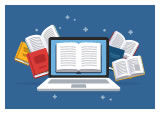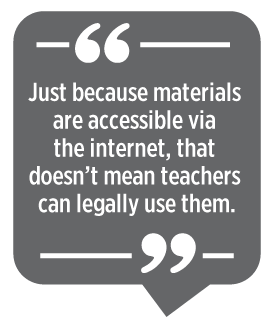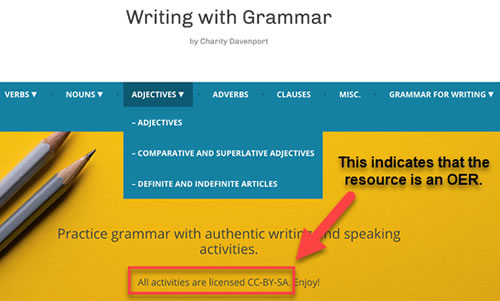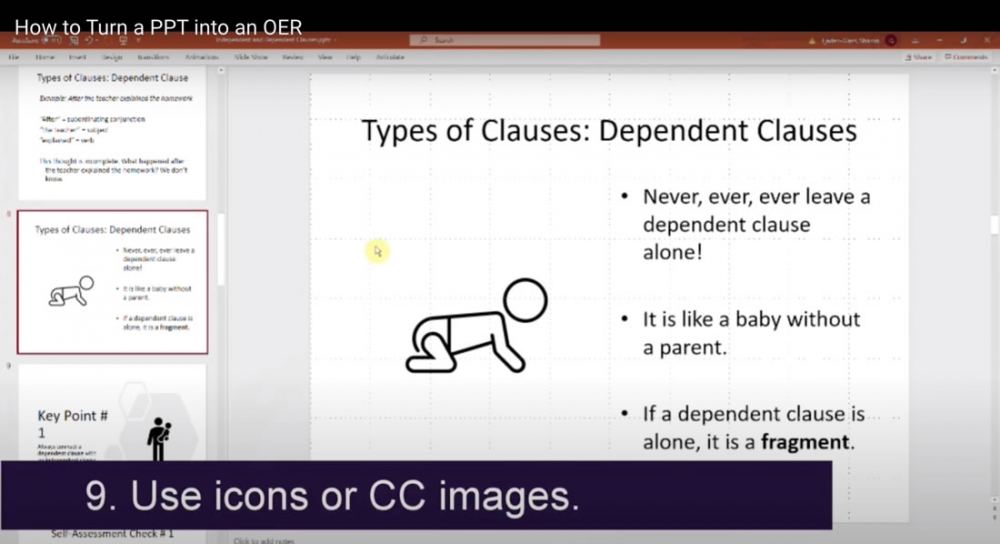|
 English language teaching and learning communities around
the world are facing educational inequity. While the information and resources
divide could also apply to regions within the developed world, it is amplified
in the underresourced communities of the developing world. In sub-Saharan
communities, English teaching resources are critically limited (Modisaotsile,
2012) and teachers face many challenges, including lack of textbooks,
libraries, and exposure to language usage (Kuchah, 2016).
English language teaching and learning communities around
the world are facing educational inequity. While the information and resources
divide could also apply to regions within the developed world, it is amplified
in the underresourced communities of the developing world. In sub-Saharan
communities, English teaching resources are critically limited (Modisaotsile,
2012) and teachers face many challenges, including lack of textbooks,
libraries, and exposure to language usage (Kuchah, 2016).
These
problems have been exacerbated by the effects of the pandemic. As teachers
rushed to shift to remote teaching, traditional printed and copyrighted
textbooks have failed to meet the needs of English language teaching and
learning communities even within developed countries. The dependence on
traditional textbooks has left many teachers without knowledge of digital
resources that can be used to engage students in learning during these
difficult times. In addition, remote learning often works best with more
flexible and editable materials that teachers can easily adapt as learning
conditions change.
Unfortunately, the digital divide between students
who have sufficient and reliable access to high-speed internet and digital
devices and those who don’t has also been exposed by this virus. Now more than
ever before, open educational resources (OER) are needed to help narrow the
ever-widening digital divide.
Problems With Copyrighted Materials
in ESL Instruction
Understanding copyright protections
is often an issue in which teachers are not well-versed. One common
misconception that often leads to violations is related to online materials:
Just because materials are accessible via the internet, that doesn’t mean
teachers can legally use them.
 The
protections of copyright begin as soon as a work is created, whether it’s a
lesson plan, a worksheet, an image, or any other creative work. Therefore, even
if a teacher finds a great New York Times article to share
with students, they are not legally permitted to print out a copy of that
article and distribute it to their students. Downloading a copy of the article
is also illegal. Providing students with a direct link to the article is best,
but what if that article needs to be adapted to your students’ level? Copyright
doesn’t allow for individual revisions. The
protections of copyright begin as soon as a work is created, whether it’s a
lesson plan, a worksheet, an image, or any other creative work. Therefore, even
if a teacher finds a great New York Times article to share
with students, they are not legally permitted to print out a copy of that
article and distribute it to their students. Downloading a copy of the article
is also illegal. Providing students with a direct link to the article is best,
but what if that article needs to be adapted to your students’ level? Copyright
doesn’t allow for individual revisions.
Few
traditional ESL textbooks offer online resources or eBook versions, and ones
that do cost just as much or even more than their printed counterparts, or the
additional resources do not meet students’ needs. Copyright protections for the
digital resources of traditional printed textbooks often create barriers to
access for teachers and students, including the necessity for digital accounts
and passwords, not to mention the difficulty of teachers and students learning
to navigate multiple digital interfaces.
What Are
OER?
OER differ
from traditional copyrighted educational resources because they carry a
different license than copyrighted materials. This difference in licensing
permits users to take specific actions that would be forbidden with copyrighted
materials. These specific actions are sometimes referred to as the “5Rs” of
OER, which determine whether the material is truly “open” (see Figure 1). The material can
be:
-
retained (you can download
a copy)
-
redistributed
(e.g., to your students)
-
revised (altered or modified)
-
remixed
(combined with other OER or your own materials)
-
reused
(by anyone with whom you share them)

Figure 1. Image by BCOER
Librarians CC
BY 4.0. Taken from BCcampus. Click here to enlarge.
OER not only
enable but facilitate the ability of teachers to use, edit, and share digital
materials, including Word documents, PowerPoint presentations, Google apps,
video files, and even simple web pages. OER add legally bound permissions on
top of copyright, which give authors the right to give up some of their control
so that users can do more with the work. These permissions are called Creative
Commons licenses (see Figure 2).

Figure 2. Example of a website as an OER.
The Benefits of OER
As it
involves copyright, OER can be complicated, but the benefits of using OER are
significant.
- Using OER reduces textbook costs for students in
higher education, saving students around US$115 per course (Nyamweya,
2018).
- Using OER makes content more accessible because it
is not locked behind a paywall or account, meaning that students don’t need
passwords to access materials, and teachers can modify materials without
wondering if they are breaking the law.
- Using OER gives students more options on how to
learn, not only by reading text but by watching videos or interacting with
content.
- As OER is accessed digitally, there are more
chances for interactivity instead of only reading or watching instructional
content.
- As materials can be tailored for each student’s
needs and teacher’s classroom contexts, OER help teachers help students reach
learning outcomes.
- OER textbooks can be easily edited to include the
most up-to-date information, which is especially useful in any field where
information quickly becomes outdated or even obsolete between editions of
printed textbooks.
OER have
many benefits that revolve around improving the quality of teaching and
learning through shared educational innovation and pedagogy. OER also play a
role in improving educational content through teachers’ communities of
practices.
A
Sample Open Educational Resource and How to Use It
OER can vary
widely. They can be as large as full courses and complete textbooks and as
small as short lessons and worksheets. They can be images, Word files, Google
Slides, webpages, and YouTube videos. OER can fit into whatever you need it to
fit in and can be used to supplement traditional textbooks or replace them.
Here
is an example chapter from an open textbook. It contains questions to
think about before reading, a vocabulary exercise, and comprehension and
critical thinking questions. This example textbook chapter is at a low B2 CEFR
level and is targeted to adult learners in higher education. Let’s say you are
interested in using this chapter for one of your courses, but you teach
intermediate middle school students. Thanks to the Creative Commons licensing
of this OER, you are free to copy this material and edit it to fit your curricular
and classroom needs. We recommend using the COCA Corpus
to adapt works with more frequently used vocabulary and RoadtoGrammar
to analyze the CEFR level of OER and subsequent adapted texts.
See Figure 3
for an example of an OER
YouTube video geared toward teaching ESL teachers how to turn their
already existing materials into OER (Tjaden-Glass, 2020).

Figure 3. Example of YouTube video as an OER,
licensed CC-BY 4.0.
Learn More About
OER
If you are
interested in learning more about the OER movement and open pedagogy, we are
heading an OER initiative for TESOL International Association and have teamed
up with the Computer-Assisted Language Learning Interest Section to offer a
webinar with more information to get teachers started with the basics of OER,
including how to find and use them. We also hope to share how OER can be
helpful during this extraordinary time, and how it can also be just as helpful
once we “return to normal.” We hope that using OER will become the “new normal”
for many teachers.
The webinar
will be Saturday, 23 January, 9–10 am EST. Look for upcoming updates in the
Computer-Assisted Language Learning Interest Section discussion board in the MyTESOL
Lounge.
References
Kuchah, K.
(2016). ELT in difficult circumstances: Challenges, possibilities and future
directions. IATEFL 2015 Manchester Conference Selections,
149–160. https://researchportal.bath.ac.uk/en/publications/elt-in-difficult-circumstances-challenges-possibilities-and-future
Modisaotsile, B. M. (2012).
The failing standard of basic education in South Africa. Policy Briefing No. 72. http://www.ai.org.za/wp-content/uploads/downloads/2012/03/No.-72.The-Failing-Standard-of-Basic-Education-in-South-Africa1.pdf
Nyamweya, M.
(2018, December 20). A new method for estimating OER
savings. SPARC. https://sparcopen.org/news/2018/estimating-oer-student-savings/
Tjaden-Glass, S. [Lucky Frog
English]. (2020, June 3). How to turn a PPT into an OER.
[Video] https://www.youtube.com/watch?v=S0RUbibsB64&t=3s
Charity
Davenport (MS in TESOL) is an instructor at
the English Language Institute at the University of Tennessee, Knoxville. She
is also working on a second master’s degree, this one in instructional
technology. She is the author of the open textbook It’s All Greek to
Me! and an open English as a second language resource
“Writing
with Grammar.”
Chadia
Mansour is pursuing her doctorate in online
and distributed learning. She has 17+ years of international teaching
experience (English as a foreign language, English as a second language,
English for specific purposes, discourse and culture) in physical and blended
modes. Her latest leadership project targets narrowing the information and
digital gaps within the English language teaching communities through access to
OERs.
Sharon Tjaden-Glass is an instructional media designer for the
eLearning Division of Sinclair Community College in Dayton, Ohio. Her current
areas of research interest include intercultural communication, instructional
design, OERs, and second language listening instruction. She is the current
community manager for TESOL International Association’s Intercultural
Communication Interest Section. |